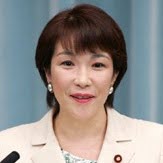Japan’s political landscape has been thrown into uncertainty after the sudden collapse of the ruling coalition, opening the field for a last-minute scramble to select a new prime minister.
Conservative frontrunner Sanae Takaichi seemed poised to assume the role following her victory in the Liberal Democratic Party’s (LDP) leadership contest on Oct. 4. However, on Oct. 10, junior coalition partner Komeito dissolved its 26-year partnership with the LDP, citing frustration over being sidelined in key decision-making. Komeito leader Tetsuo Saito confirmed that his party would not support Takaichi in the upcoming Lower House vote scheduled for Oct. 20.
The leadership vacuum arose after incumbent Prime Minister Shigeru Ishiba stepped down amid mounting pressure following poor party performances in two national elections. With the LDP holding just 196 seats in the Lower House, it risks failing to secure a majority. A runoff could ensue if no candidate receives enough votes.
The coalition shake-up boosts the opposition’s leverage. The three main opposition parties—the Constitutional Democratic Party (CDP), Nippon Ishin, and the Democratic Party for the People (DPP)—hold a combined 210 seats, while Komeito adds another 24. CDP leader Yoshihiko Noda highlighted potential common ground with centrist, pacifist-leaning Komeito.
Behind the scenes, opposition jockeying is intensifying. CDP secretary-general Jun Azumi is pushing for a united opposition candidate, potentially including DPP leader Yuichiro Tamaki. Yet tensions remain: DPP and Ishin leaders question CDP’s commitment to reform, and LDP overtures to DPP have been firmly rejected.
Takaichi could still become prime minister if opposition parties fail to unify, but without Komeito, her administration would struggle to pass policies and might face a no-confidence vote. Sources close to her indicate that dissolving the Lower House for a snap election later this year could become the only viable path forward.

